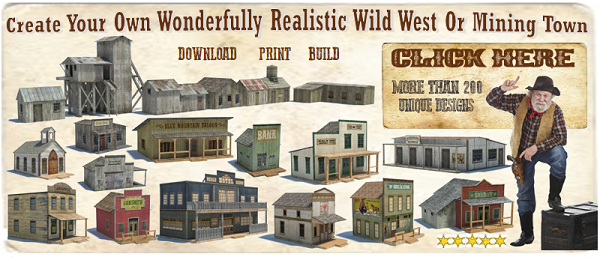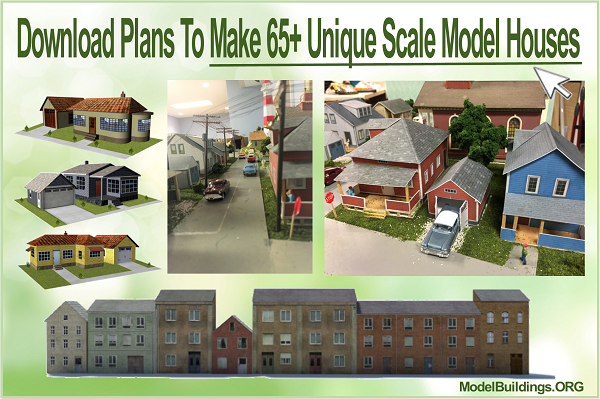5 Important Points To Consider When Planning
To Build Your Model Train Layout
There are definitely things that you should and shouldn’t do when building a model train layout, so it’s better to do it right the first time. With this in mind, here’s our checklist of 5 important things to consider when building your model railroad layout:
Important Point #1. Don’t Rush Things
Work carefully through the process of building your train layout. Do things logically and thoroughly. It takes time to build a great set – it is NOT a race!
If you rush doing things then you’ll get stressed especially when things don’t go as planned. Mistakes can be costly and frustrating. It is better to think things through carefully step-by-step in a logical order.
Start by drawing some sketches and writing some notes on what you want to achieve. That’s a good idea because you’ll then have something to refer to and keep you on track (oops another pun!). Take your time and read any instructions carefully before you get started.
Important Point #2. Take One Step at a Time
This might sound a bit strange, but don’t try and do too much at first. It is a common mistake. For example, there is no point in purchasing an expensive train set, setting it all up…only to have the base that supports it collapse under the weight of the set. That would be disastrous!
Here’s a couple of quick tips to consider …
© Copyright https://www.modelbuildings.org All rights reserved.
Determine the required dimensions for a variety of track layouts before deciding on what size to build your train board(s). Depending on the space available, you can modify the dimensions or create a larger modular unit by joining two or more boards together. The tracks for today’s smaller-scale trains need to be precisely and firmly attached to a train board that won’t warp or bend easily.
Plan your layout to be easily accessible, so that you can quickly and easily fix problems. What can go wrong? Regardless of how good your trackwork is – derailments still happen. Sometimes it’s caused by a super-light flatcar being shoved behind a heavy boxcar, or a hopper with out-of-gauge wheelsets somewhere waiting to pick a switchpoint or be forced off the track. S-curves are a hazard for passenger cars. As well as derailments, locomotives stall on spots of dirty track, or on turnouts that have insulated frogs.
None of these things are much of a problem as long as you can reach the spot of the accident. The trouble starts when you locate tracks and turnouts outside your reach. On paper the placing of a critical turnout 36” or more from the layout edge doesn’t seem like a problem, but once the yard starts to operate, it can become your biggest headache.
Those tips are a good example of the basic, but important, steps that needs to be carefully thought though from the start. It is best to start small and then work your way up as and when your skills improve. Model railroading is all about doing what you are capable of doing and what you enjoy doing..WITHOUT getting stressed out from attempting too much, or doing things that are overly complicated when starting out.
Important Point #3. Complete Each Step
Finish the entire sequence of construction, including any detailing and scenery before proceeding to the next step. In other words, “always finish what you start.” Some people try to do too many things at once, but they fail to complete jobs and sometimes do them poorly.
It is the secret to creating a reliable and outstanding layout… and besides, it will provide you with an enormous sense of accomplishment. It is tempting to jump ahead and skip out on the different stages of construction. Don’t do it, because it’s all part of the jigsaw and the all-important learning process. The skills you acquire at this level will help you master more complex projects as you progress with this enthralling hobby.
Here’s another quick tip to consider…
Having a separate shelf for your transformer and switch controls can be a good idea. There are different ways you can do this…here’s one:
With a piece of plywood approx.12×24″ and 1×4 and 1×2 pine, you can make a detachable shelf for your transformer and switch controls. Cut the plywood to length so that the support arms will be spaced exactly as far apart as the train board crosspieces.>
Decide where you want the shelf and clamp it in place while you bore four 1/4-in. clearance holes through the shelf supports and train-board crosspieces. Then, attach the support arms to the underside of the train board with bolts. Determine where you want the shelf and clamp it in place so that you bore four 1/4-in clearance holes through the shelf supports and train-board crosspieces. Attach the support arms to the underside of the train board with bolts.
Important Point #4. Fix Mistakes
Most layouts are a combination of ideas and compromises built over a period of time. Above all, don’t be afraid of making mistakes, because they can always be ectified. Even the most experienced railroaders make mistakes at times. And, in reality, it’s likely that only you will notice that the mistakes even exist.
It’s better to fix your mistakes as you go along, because it’s no fun to have to start over from the beginning. Care in design and testing is essential at each stage of the process because, at times it can be extremely difficult to make alterations or correct mistakes. But, in saying that, you shouldn’t be afraid to making mistakes, because that’s how we learn.
For instance, if your train makes it around a curve only 80% of the time, then why not rectify the problem? That’s not to say you don’t enjoy watching a locomotive and cars derail (some people do!). To fix the problem it may mean taking the track apart and realigning the curve so that it isn’t so sharp.
Why settle for annoying little omissions and mistakes when often they can easily be fixed? If your hillsides are the wrong color why not repaint or touch them up? If the telegraph poles look lopsided, then straighten them. If a light does work fix it. After all, you’re aiming for realism here…and besides, repairs and maintenance are part of what makes railroading such an absorbing and fun hobby.
There’s nothing wrong with making and fixing mistakes. In fact, when you’re just starting off, you will make mistakes. This is a given but you have to learn from your mistakes and then move on, as failure is only feedback. Creating the perfect layout takes time and there’s no pleasure in rushing the process. You’ll be glad you took that time to get the detail just right especially when you stand back and look at the excellent results.
Important Point #5. Keep an Open Mind to New Ideas
Think outside the square, expand your horizons, keep an open mind and be prepared to try new things. This is important, because model railroading is a creative hobby and there are always new ideas and techniques to explore especially when it comes to constructing layouts.
Talk with other model railroad enthusiasts; keep up-to-date with the latest techniques. You can access a wealth of information and ideas inside the members-only area of the online model train club. You can also get a lot of your technical questions answered by submitting your well-worded questions to the moderator of the model train blog http://blog.model-train-help.com It’s usually a case of the better the question – the better the answer, so it’s worth thinking it through carefully before using the link on the blog to submit your question for publication.
In this article we haven’t talked about actual model trains – the locomotives and rolling stock. Don’t worry I hadn’t forgot about them, I just thought it was best to discuss the basics of planning a layout before focusing rolling stock, scenery, electrics, accessories etc. After all, without getting the basics right, everything else can be somewhat pointless.



